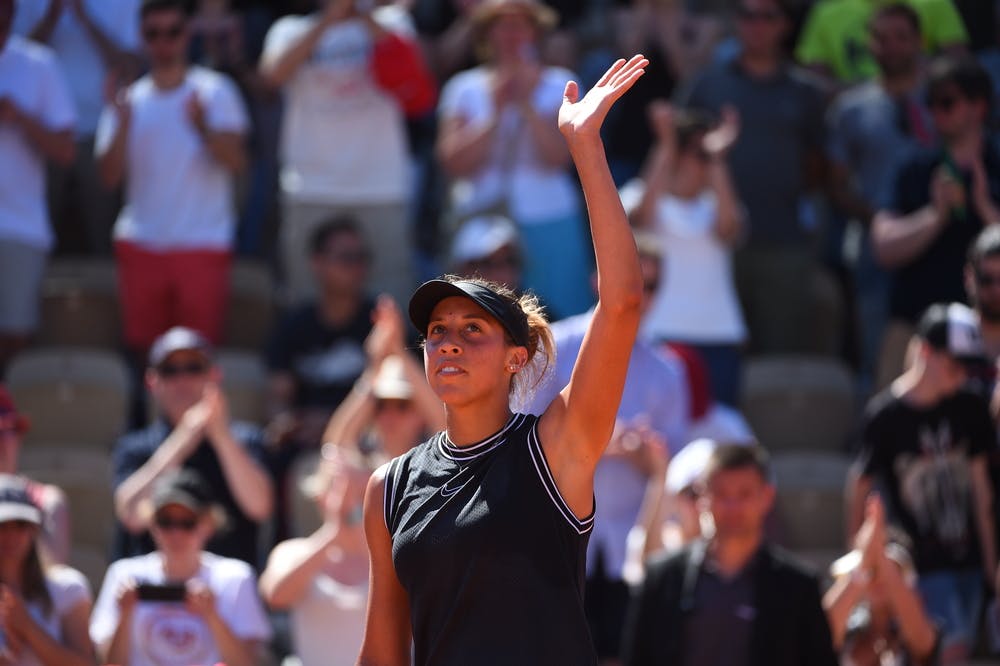She lifted the trophy on the green clay of Charleston in April, which was Keys’ first title success on clay. But her build-up to Paris was less than ideal as she lost in the first round in Madrid to Sorana Cirstea and the second round in Rome to Sofia Kenin.
It doesn’t seem to matter though as Keys once again has risen to the occasion at one of the sport’s grandest stages.
Best headspace
“What we found worked well with Madison is the week before, getting onsite. And being around the site as much as possible, really took away a lot of the anxiety of like, ‘Oh my gosh’,” explains Davenport, who is a three-time Grand Slam champion and former world No.1.
“You get into Wimbledon if you do well at Eastbourne [the week before], or Sydney [ahead of the Australian Open], and you get in on Saturday and then all of a sudden you’re rushing to get one hit and then you go and try and play matches.
“So no matter what happens, it was agreed that the whole week before would be onsite. We just learned that that works best for her. She knows now how to manage it all.
“Very focused, and she knows she gets the most reward from playing well at the Grand Slams. She’s just learned how to handle it all. But it’s been a process. There’s been some bumps in the road for her in the last three or four years, but for the most part she knows how to do it. It’s a learned skill, it’s not easy. It’s chaos for all these weeks.”
Keys is one of several big-hitters to be doing well on clay, with others like Karolina Pliskova and Petra Kvitova picking up titles on the surface as of late.
End of the surface specialists
“I think anything can happen and I think all the players go in thinking it right now,” says Davenport. “I know when I played I was like, ‘There’s no way I can beat Arantxa or Conchita or Monica on this surface in the ‘90s. So I’m just going to do as well as I can.
“I don’t think that’s the case. I think Kvitova, had she played, kind of had that same attitude, not a clay-court player but kind of thinking, ‘Why not?’
“So I don’t think that’s the case so much anymore. If you look at all the players as a whole, the athleticism is super-high. And so now you get big-hitters but they can also move. Maybe they’re not as fast as a [Simona] Halep or a [Sloane] Stephens around the court but they can cover the court really well.”
Keys is on collision course for a potential semi-final meeting with defending champion Halep. The Romanian No.3 seed, who faces Polish teen Iga Swiatek in the last 16 on Monday, is arguably the best clay-court player in today’s game.
Keys admits her relationship with the surface is an ongoing negotiation, but feels better on it compared to the past. Davenport is backing Halep to repeat in Paris, seeing her as the strongest candidate on the terre battue.
“I think she should (regularly) win here, the next five years. You watch her play around the court… but can she get it together mentally?" says Davenport. "I don’t know."
 ROLAND-GARROS
18 May - 7 June 2026
ROLAND-GARROS
18 May - 7 June 2026



